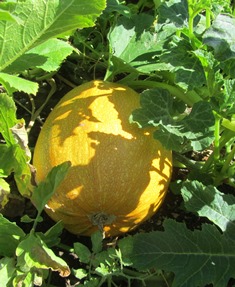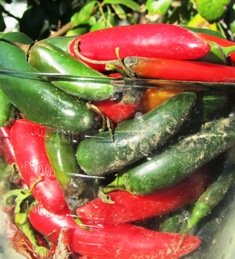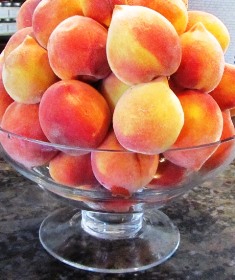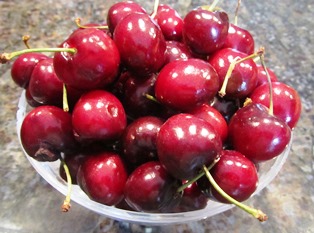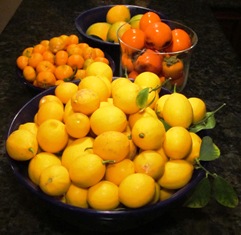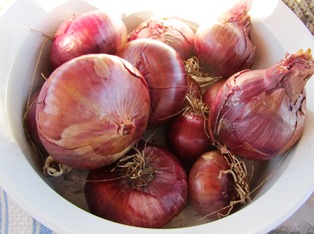Visit a Farm in the Fall For a U-Pick Experience
The Henny Penny Farmette is about a half hour away from Brentwood. There are at least fifty farms in and around Brentwood that offer families a U-Pick experience. The city is located in the eastern region of the San Francisco Bay Area.
Although Brentwood has had a post office since 1878, the city today is largely residential. That said, there are many actively producing farms and preserved lands around the pockets of community. The area has a semi-arid, Mediterranean climate and is situated on the alluvial plain of the Sacramento-San Joaquin Delta.
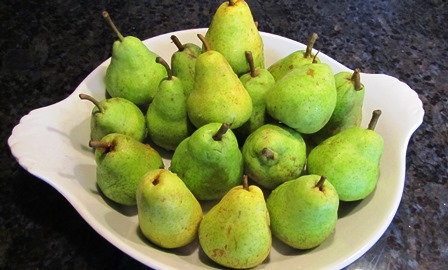
To bring out the maximum sweetness of pears, place them in a paper bag for two days in a kitchen cupboard
Many of the farms permit family picking of produce and tree crops. Some of the crops available for picking through October include apples, corn, figs, green beans, onions, peppers, pears, persimmons, pomegranates, pumpkins, squash, strawberries, and tomatoes. Additionally, walnuts, pistachios, and almonds are available year-round at some of the farm stands. There are also wineries and vineyards in the region.
As you drive around the area, look for a Brentwood Harvest Time sign as an indicator for a farm. There will be a number on the sign that coordinates to a name of a farm with that same number on a handily map that you can get at http://www.harvest4you.com. In July, the city hosts a harvest festival for the entire family. It features tractor rides and corn shucking and eating contests, among other activities.
Finally, if Christmas at your house wouldn’t be the same without a live tree, you can find Christmas tree farms in and around Brentwood as well on the Harvest4you.com website. Check it out.
U-pick guidelines as listed on the map include the following rules.
1. No climbing or damaging trees
2. Children are not allowed on ladders.
3. You must buy what you pick.
4. Check produce for ripeness before picking it.
5. Do not throw fruit.
6. Do not litter.
California’s Agricultural Wealth on Display in Its Farmers’ Markets
California is especially blessed with rich soil and that lovely Mediterranean climate with the near-perfect amount of heat and chilling that our agricultural products require.
You might not know that Northern California leads the nation in production of nearly three dozen different commodities, including artichokes, strawberries, peaches, and walnuts. Many products can be found at local farmers’ markets. See http://www.pcfma.com/
Our state offers more than 350 farmers’ markets and many are year-round. With growing interest in healthy eating as advocated by First Lady Michelle Obama, whose position about the importance of healthier food for kids and their families has been highly publicized, community participation in local farmers’ markets is growing.
Buy fresh and buy local. I love that adage because in practice your dollars spent at farmers’ markets or in direct purchases from farms preserves our farmlands, local growers, and small businesses selling locally grown fruits, vegetables, berries, nuts, and citrus.
The Pacific Coast Farmers’ Market Association has produced a comprehensive listing of agricultural products available in our area for each month of the year. I’ve recapped the list of vegetables here. The fruit and berries will be the subject of a future blog.
Asian Vegetables: January-December
Asparagus: March-June
Beans: January-December
Broccoli: January-December
Brussels sprouts: January-March; September-December
Carrots: January-December
Cauliflower: January-June; October-December
Celery: January-December
Corn: July-September
Cucumber: May-November
Eggplant: May-October
Garlic: January-December
Lettuce: January-December
Mushrooms: January-December
Onions: January-December
Parsnips: January-May; October-December
Peas: April-October
Peppers: May-November
Potatoes: January-December
Spinach: January-December
Squash (summer): May-September
Squash (winter): January-February; October-December
Sweet Potatoes: January; September-December
Tomatoes: May-October
Help preserve California’s rich heritage of plant diversity. Support your local farmers’ market by buying fresh, often just-picked vegetables and fruits, the result of our long growing season and rich soil. You’ll be supporting our state’s farmers and growers.
 Facebook
Facebook Goodreads
Goodreads LinkedIn
LinkedIn Meera Lester
Meera Lester Twitter
Twitter





